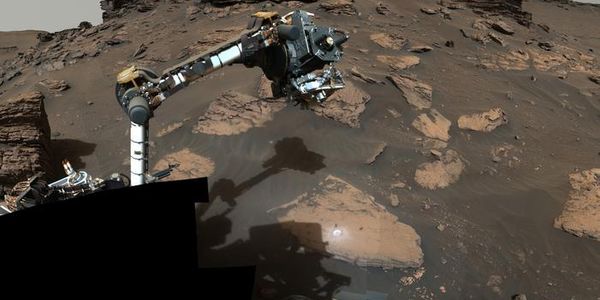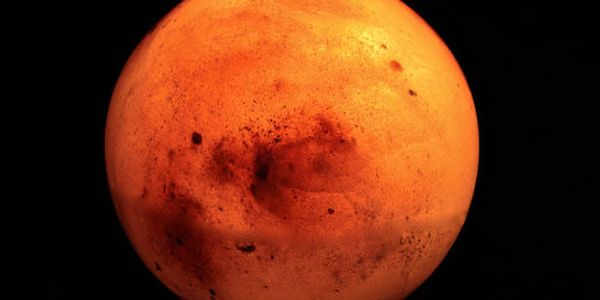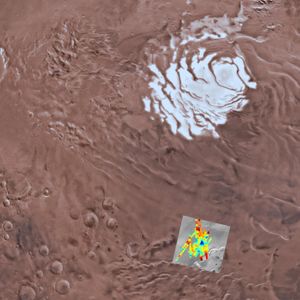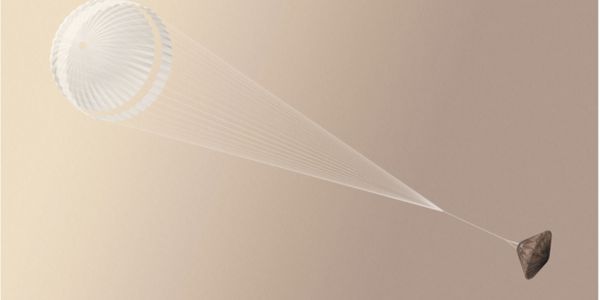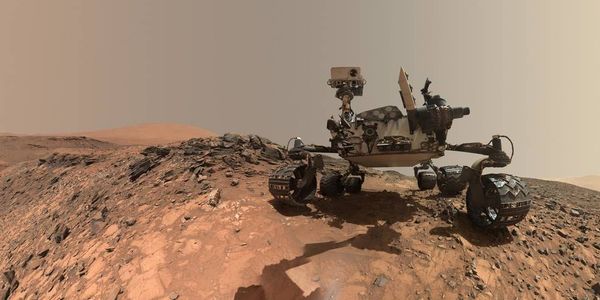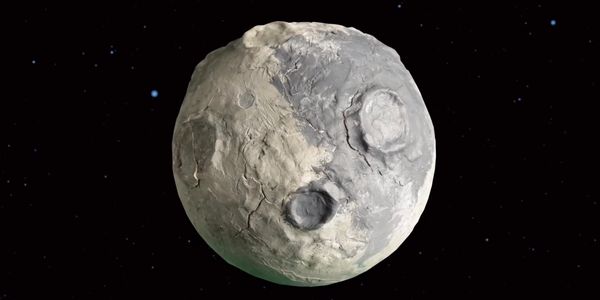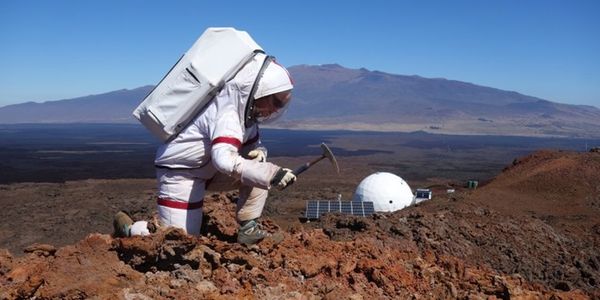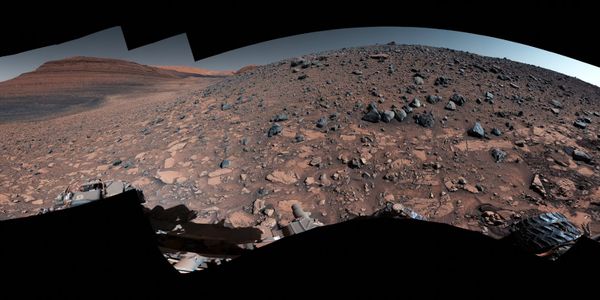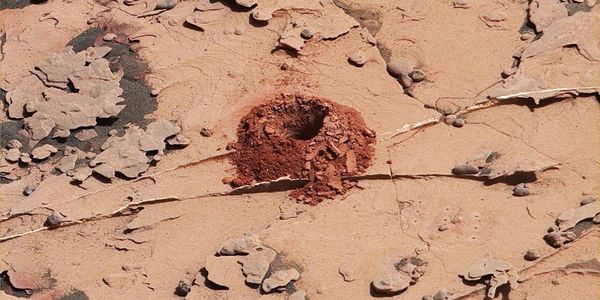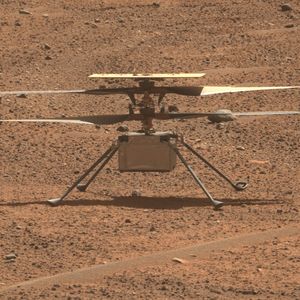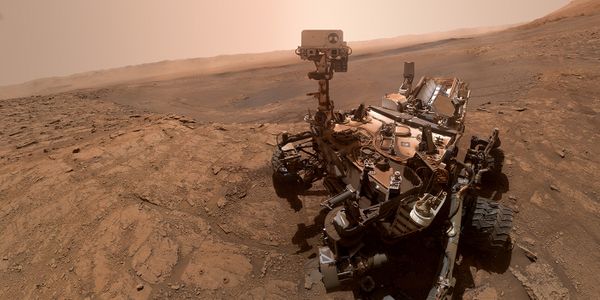Showing 6254 Results
SEARCH
Webinars
(17)
Virtual Events
(16)
Trending News
(768)
Content Tags
(3)
Users
(5423)
Scientific Products
(27)
-
JAN 30, 2016Space & AstronomyIn October of last year, NASA expressed its interest in sending mankind to Mars to live there permanently, giving them the habitation tools necessary to su
-
OCT 01, 2015Space & AstronomyIt was only a few days ago that NASA made a major announcement revealing the existence of flowing water on some parts of the red planet of Mars, fourth in
-
AUG 14, 2024Space & AstronomyDid life once exist on Mars, and if so, where will we find it? This is what a recent study published in AGU Advances hopes to address as a team of several
-
MAR 24, 2017Plants & AnimalsThe first astronauts who travel to Mars on behalf of NASA in the not-too-distant future will not only need to set up inside of a survivable habitation modu
-
APR 07, 2016Space & AstronomyDid Mars become more habitable over time all thanks to the collisions it has endured from large space rocks like asteroids and comets? In a study docum
-
There’s seemingly endless evidence that water once flowed on the Martian surface, and in addition to that, many theories exist concerning the presenc
MAY 14, 2018
Space & Astronomy
We’re used to seeing airplanes and helicopters in the sky on Earth, but scientists still aren’t entirely sure whether the same forms of air tra
JUL 26, 2016
Videos
SpaceX is an American commercial space company that has contracts with NASA to produce rockets capable of delivering payloads to space. Among tho
JUL 01, 2017
Videos
Experts in the space transportation field, including NASA, SpaceX, and other agencies/companies alike are taking the idea of sending humans to Ma
FEB 03, 2020
Space & Astronomy
If you ever listen to the radio and experience a phenomenon in which the broadcast sounds garbled or as if another radio station is attempting to p
OCT 20, 2016
Space & Astronomy
Like NASA, the European Space Agency is trying their best to study Mars. They had hoped to use the ExoMars mission, which was launched in March, to learn m
JUN 10, 2018
Space & Astronomy
The possibility that life once existed on Mars is an idea that has captivated planetary scientists for decades. But new findings uncovered by NASA’s
MAR 07, 2015
Space & Astronomy
Here on earth, carbon dioxide is a pollutant and a greenhouse gas. But thanks to a new engine technology, for colonists on Mars, CO2 could be an easily ac
SEP 03, 2018
Space & Astronomy
If you’ve been paying any attention to NASA and SpaceX lately, then you might’ve caught wind about their mutual interest in colonizing
AUG 31, 2016
Earth & The Environment
Six scientists spent 365 days in a geodesic dome set in a Mars-like environment 8,200 feet (2,500 meters) above sea level. The simulated habitat was loca
SEP 18, 2023
Space & Astronomy
NASA’s Mars Curiosity rover has been hard at work on the Red Planet since 2012 teaching us more and more about this mysterious and awe-inspiring worl
DEC 26, 2017
Space & Astronomy
Most images depicting other planets in the solar system illustrate the North at the top and South at the bottom. A picture snapped by the European Space Ag
SEP 23, 2024
Space & Astronomy
Could slight wobbles in the orbit of Mars be caused by microscopic black holes that have existed since the Big Bang? This is what a recent study published
JUL 07, 2016
Space & Astronomy
NASA apparently had some technical difficulties with the Mars Curiosity Rover over the 4th of July weekend. The debacle all began on July 2nd. I
MAY 23, 2018
Space & Astronomy
Back in December, a critical component of the Mars-based Curiosity rover’s drill stopped working. In particular, two drilling stabilizers used to kee
JAN 30, 2018
Videos
The Curiosity rover has been studying the Martian surface since 2012, and it has since enabled planetary scientists to learn a lot about the uniq
MAY 09, 2021
Space & Astronomy
NASA sent the Perseverance rover to Mars loaded with cutting-edge technology, one piece of which is a robotic helicopter called Ingenuity. On April 19, 202
SEP 18, 2016
Space & Astronomy
It is understood that Mars was probably once a water hole with tons of rivers and streams of running water, but after its atmosphere thinned out and its ma
SEP 30, 2017
Space & Astronomy
One of the trickiest parts of sending astronauts to the Moon or Mars in the long-term is figuring out how and where they'll live. Both environments are
OCT 09, 2018
Space & Astronomy
Unless you’ve been living under a rock, you should know by now that NASA’s planning to send another rover to the Martian surface to inv
NASA’s Ingenuity Mars Helicopter recently completed a successful 54th flight, dubbed Flight 54, on the Martian surface on August 3, which comes after
JAN 22, 2022
Space & Astronomy
In a recent study published in the Proceedings of the National Academies of Sciences journal, Christopher H. House of the Earth and Environmental Systems I
OCT 27, 2015
Space & Astronomy
In a rare event this week, sky gazers will be able to see three aligned planets in the Eastern skies at night amongst the stars. The planets Mars, Jupiter,


